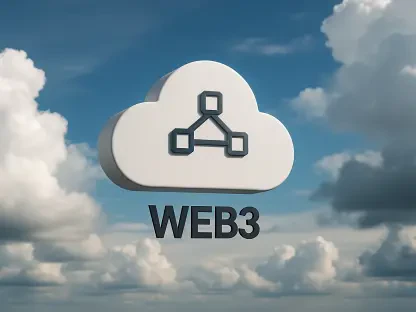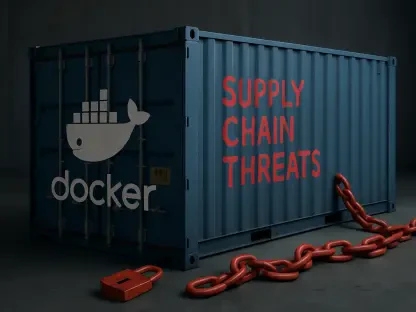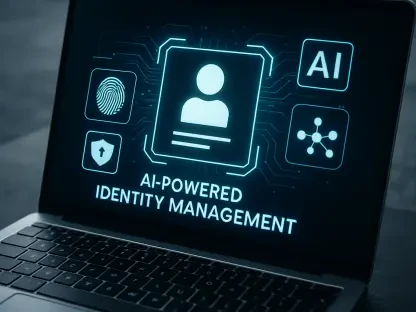In today’s tech landscape, cybersecurity threats are constantly evolving, particularly in the realm of open-source software. Maryanne Baines, a leading expert in cloud technology, shares her insights on the recent infiltration of NPM packages with malware. With her extensive experience in evaluating cloud provider tech stacks, she helps us understand the implications of these threats and how developers and organizations can protect themselves.
Can you explain what NPM is and its significance in the JavaScript ecosystem?
NPM serves as the backbone for the JavaScript community. It’s the default package manager for Node.js, providing developers with a platform to manage dependencies, share code, and install libraries that are essential for building JavaScript applications. Its accessibility and extensive library collection make it indispensable for developers worldwide.
What recent security threat has been discovered in NPM packages?
Recently, more than a dozen NPM packages, which collectively have millions of weekly downloads, were compromised to deliver malware. This discovery is alarming due to the vast reach these packages have within the developer community, highlighting the need for vigilance against supply chain threats.
Which kind of malware has been identified in these NPM packages, and what can it do?
The malware identified is a Remote Access Trojan (RAT). This allows attackers to execute shell commands, capture screenshots, and upload files from infected systems. With these capabilities, they can engage in illicit activities such as cryptocurrency mining, information theft, and potentially shutting down critical services.
What are some potential consequences of this malware infection?
The potential repercussions are significant. Infected systems could see unauthorized data breaches, interruptions in service, and possible financial losses due to mined cryptocurrencies. Furthermore, the compromised trust among users and clients could lead to long-term reputational damage.
Can you describe the similarities and differences between the recent attack and the previous rand-user-agent case?
The recent attack bears striking similarities to the rand-user-agent incident, especially concerning the malware payload. However, this time the attackers have introduced a new C2 server and additional commands, such as dumping system metadata and accessing public IP information—adding more layers to their attack strategy.
What actions has Aikido Security taken in response to this threat?
Aikido Security has been proactive. They’ve compiled a comprehensive list of affected NPM packages and urged developers to review this list promptly. By raising awareness and distributing this information, they hope to mitigate the spread and impact of the malware.
Why is there an increasing concern about supply chain security risks for developers and enterprises?
Supply chain security risks are on the rise because attackers are exploiting the inherent trust within the open-source community. Instead of waiting for vulnerabilities, they actively inject malware into reputable libraries, as highlighted by Mike McGuire’s insights. This creates a tricky landscape for developers who rely heavily on these open-source resources.
How are attackers exploiting the open source community’s trust, according to Mike McGuire?
According to McGuire, attackers are leveraging the trust developers place in open-source libraries. By embedding malicious code into these trusted libraries, they bypass many traditional security checks, affecting numerous organizations before detection.
What are some recommendations for developers who think they might have installed the compromised packages?
Developers suspecting that they’ve installed compromised packages should analyze their systems for any suspicious firewall connections and check specific system file paths for unauthorized files, particularly on Windows. Quick action, like disconnecting affected systems, is crucial.
How can developers identify if their systems have been compromised by this threat?
To identify potential compromises, developers should look for specific malware indicators, such as unexpected outbound traffic or foreign files in system directories. Regular monitoring and reactive measures against these signs can help maintain system integrity.
What steps should organizations take to manage and secure open source dependencies effectively?
Organizations should compile detailed inventories of their open-source dependencies. Additionally, routinely validating package sources and using lock files to avoid unexpected updates can greatly enhance security measures for these dependencies.
How can enterprises use lock files to enhance security in their projects?
Lock files can be vital in pinning exact package versions, thereby avoiding unintended updates or alterations. This controlled setup allows enterprises to manage dependencies securely and predictably, limiting exposure to potential compromised packages.
What should development teams do if their projects rely on any of the compromised NPM package versions?
If projects use the compromised versions, teams should immediately update or roll back to a safe state predating the compromise. This ensures that their software remains secure and free from malicious alterations.
Why is it important to perform automated security scanning within the CI/CD pipeline?
Automated security scanning in the CI/CD pipeline is critical because it catches security vulnerabilities early in the development process. By identifying potential risks at this stage, teams can address them promptly, preserving the security and reliability of their software.
What are some signs that might indicate a package has been tampered with, such as sudden updates or changes in maintainers?
Indicators of package tampering include unexpected version updates, sudden maintainer changes, or unfamiliar post-install scripts. Keeping an eye on these signs can help developers identify potentially compromised packages quickly.
Considering the report, what measures should companies take to ensure their software remains trustworthy and secure?
Companies should enforce stringent security protocols, including regular audits of dependency sources, maintaining an updated security database, and fostering a culture of vigilance among developers. Encouraging open communication channels for reporting suspicious activities is also essential to maintain software integrity.









